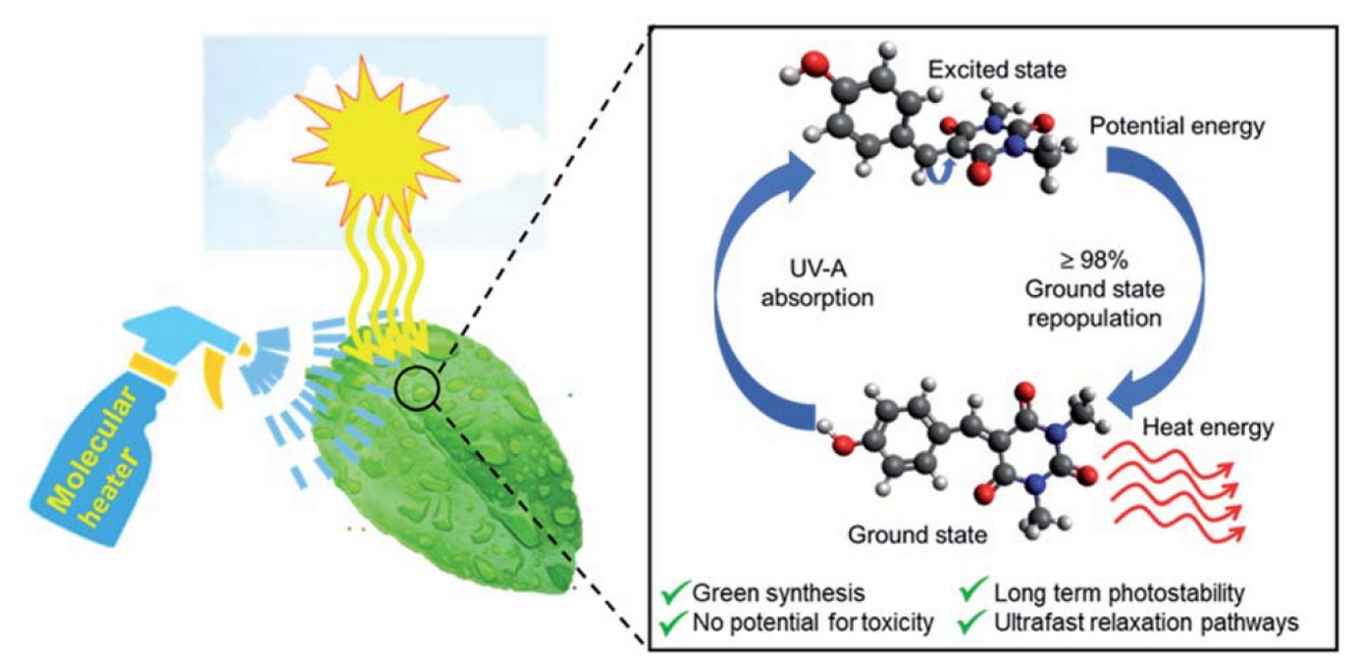Novel sustainable molecular heaters for boosting crop production
10 November 2021

The research formed part of the 'Boostcrop' project that in 2018 received nearly 5 million euros from the European 'Future and Emerging Technologies' programme. It aims at increasing yields in agri- and horticulture based on the development and application of 'molecular temperature controllers'. The idea is to use these molecules in a spray to prevent cold stress and improve crop growth at low temperatures. Previous research has already demonstrated that this principle of 'molecular heating' can indeed be used to warm plants and increase the temperature of leaves. Experiments in the laboratory and greenhouses also established that their application can lead to increased amounts of biomass. The paper now published in Chemical Science presents a range of phenolic barbiturics as a novel class of molecular heaters that not only display optimal heating properties but are also predicted to be non-toxic and, importantly, can be synthesised in a sustainable fashion.
Abstract
Light-to-heat conversion materials generate great interest due to their widespread applications, notable exemplars being solar energy harvesting and photoprotection. Another more recently identified potential application for such material is in molecular heaters for agriculture, whose function is to protect crops from extreme cold weather and extend both the growing season and the geographic areas capable of supporting growth, all of which could help reduce food security challenges. To address this demand, a new series of phenolic-based barbituric absorbers of ultraviolet (UV) radiation has been designed and synthesised in a sustainable manner. The photophysics of these molecules has been studied in solution using femtosecond transient electronic and vibrational absorption spectroscopies, allied with computational simulations and their potential toxicity assessed by in silico studies. Following photoexcitation to the lowest singlet excited state, these barbituric absorbers repopulate the electronic ground state with high fidelity on an ultrafast time scale (within a few picoseconds). The energy relaxation pathway includes a twisted intramolecular charge-transfer state as the system evolves out of the Franck-Condon region, internal conversion to the ground electronic state, and subsequent vibrational cooling. These barbituric absorbers display promising light-to-heat conversion capabilities, are predicted to be non-toxic, and demand further study within neighbouring application-based fields.
Publication details
T.T. Abiola, B. Rioux et. al.: Towards developing novel and sustainable molecular light-to-heat converters. Chemical Science, 10 November 2021, DOI: 10.1039/D1SC05077J